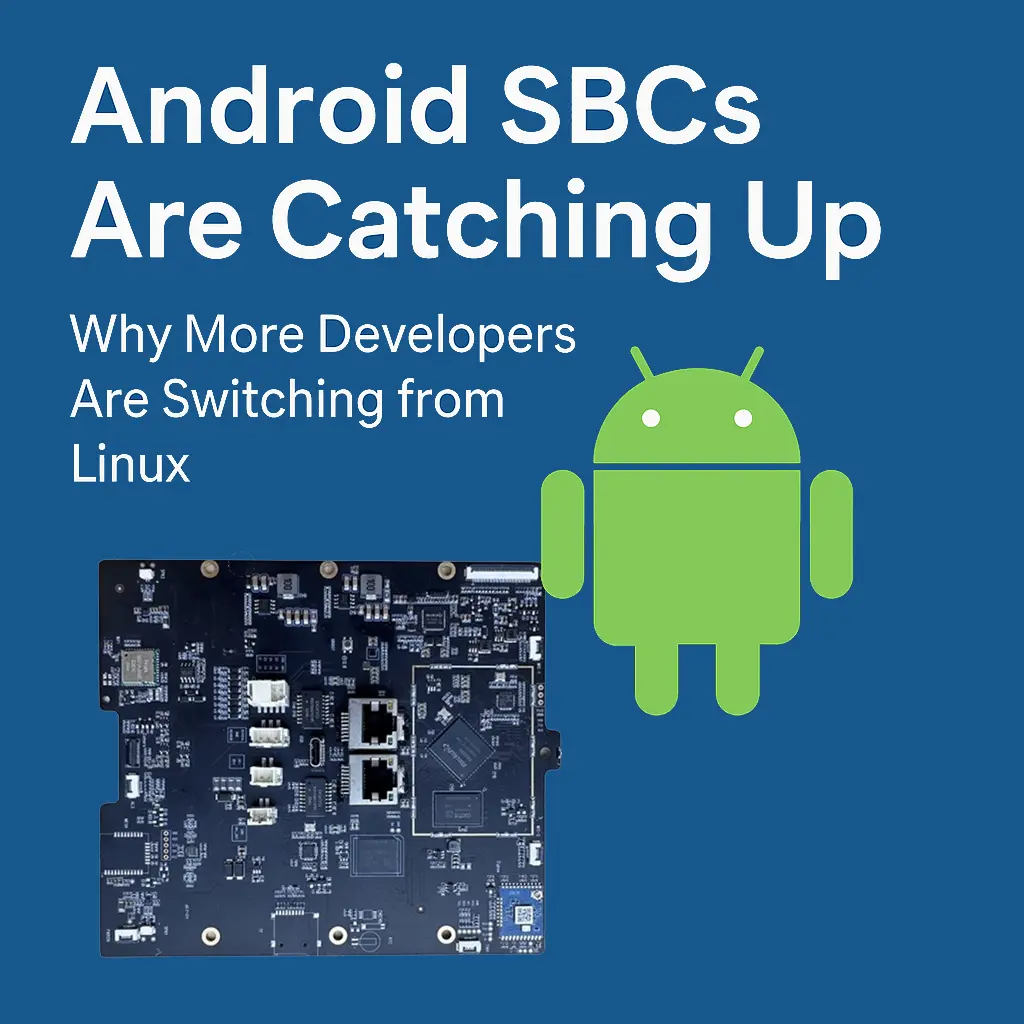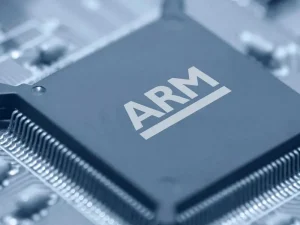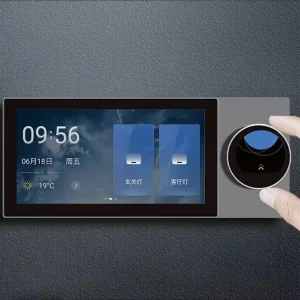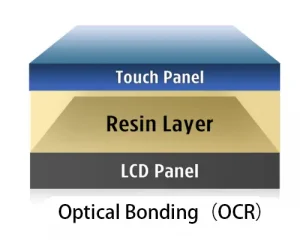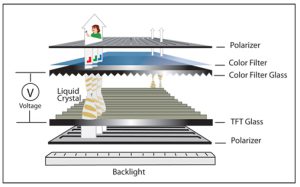1. Introduction: From Niche to Mainstream
Single Board Computers (SBCs) have long been a cornerstone in the embedded systems world, enabling compact, power-efficient, and purpose-built computing. While Linux-based SBCs have traditionally dominated the scene, Android SBCs remained relatively niche due to concerns around cost, performance, and stability.
However, things are changing. With rapid advancements in hardware and software, Android SBCs are now entering a new phase of mainstream adoption. In this article, we explore why Android is becoming an increasingly viable—and often superior—option for embedded computing.
2. Cost and Performance: Android SBCs vs Linux SBCs
Historically, Android SBCs were seen as less attractive due to higher costs and slower performance compared to Linux on the same hardware. Linux systems typically ran faster and were more stable, especially on resource-constrained boards.
But with the arrival of modern chipsets such as ARM Cortex-A55, A76, and high-frequency multi-core SoCs, along with large RAM and faster storage, the performance gap has significantly narrowed. Android now runs smoothly on affordable hardware, and its cost-to-performance ratio is no longer a disadvantage.
Thanks to these improvements, Android SBCs are catching up—and in many cases, even surpassing their Linux counterparts in specific use cases.
Curious how Android SBCs stack up against Linux-based alternatives? Here’s a clear breakdown:
| Feature | Android SBC | Linux SBC |
|---|---|---|
| User Interface Development | Fast with Android Studio, rich UI support | Depends on Qt or LVGL, more coding effort |
| Multimedia Support | Excellent: built-in AV APIs and hardware acceleration | Good, but needs additional configuration |
| Boot Speed | Slower (10–20s) | Faster (2–5s) |
| Developer Community | Massive Android developer pool | Smaller, more specialized |
| Stability | Mature with OTA and debug tools (Android 11+) | Traditionally strong in system-level stability |
| Application Ecosystem | Supports existing Android apps/APKs | Requires custom app development |
3. Stability Matters: Android Has Grown Up
In the early days, embedded Android systems were often plagued by instability issues such as system crashes, memory leaks, and poor peripheral compatibility. These shortcomings made many developers hesitant to adopt Android for industrial and commercial applications.
However, with the maturity of Android 11 and later versions, stability is no longer a major concern. Modern Android systems come with robust debugging tools, improved memory management, and reliable OTA (Over-The-Air) update support. These advancements have significantly improved the reliability of Android-based solutions.
Today, Android SBCs are widely used across various industries, from smart terminals and vending machines to industrial control systems and commercial interactive displays. The operating system has truly grown up, becoming a dependable foundation for embedded development.
4. Android SBC Development Ecosystem: Tools, Talent, and Speed
When comparing the development ecosystems of Android and traditional embedded Linux, Android clearly holds the advantage — especially for teams aiming to build rich UI/UX experiences in a shorter time frame. One of the key reasons is the sheer size of the Android developer community, which vastly outnumbers that of embedded Linux.
Leveraging the mature mobile development ecosystem, Android SBC projects benefit from comprehensive toolchains and development environments. Tools like Android Studio offer powerful code editing, debugging, profiling, and UI design capabilities — all in one integrated platform. Additionally, well-established testing frameworks, continuous integration (CI) tools, and UI emulators further accelerate development and reduce time-to-market.
Moreover, Android’s component-based architecture and high-level APIs make it easier to implement complex interfaces, animations, and services that would be time-consuming to build from scratch in embedded Linux. Developers also have access to countless open-source libraries, UI templates, and learning resources, minimizing the overhead required to get started.
From a hiring perspective, Android skills are far more widespread in the job market. This makes it easier for startups and enterprises alike to scale development teams and reduce onboarding time. In short, for projects involving modern UI design, media interaction, or rapid iteration, Android SBCs offer a developer-friendly platform with superior ecosystem support.
5. Multimedia and Compatibility: A Strong Case for Android
Android-based SBCs shine when it comes to multimedia performance and application compatibility. One of the core strengths of Android lies in its built-in support for advanced graphics and audio-video processing. With native APIs for OpenGL ES, MediaCodec, and multimedia playback, Android delivers a fluid and immersive user experience right out of the box.
Compared to Linux solutions that rely on Qt or LVGL for GUI development, Android provides a more polished and media-rich interface. The system’s deep integration with hardware-accelerated rendering, touch responsiveness, and video codecs gives it a clear edge in multimedia-intensive applications such as digital signage, smart displays, infotainment systems, and entertainment terminals.
In addition, Android’s user interface framework is designed for flexibility. It handles a wide variety of screen resolutions and DPIs with ease, thanks to scalable layouts and density buckets. This ensures consistent UI rendering across devices—from small 4-inch smart panels to 15.6-inch HD kiosks—without requiring custom tuning for each screen.
Lastly, the Android ecosystem supports backward compatibility with a massive library of existing APKs. Developers can leverage pre-built components, third-party apps, and legacy solutions without starting from scratch. This significantly reduces development time and enables businesses to reuse existing software assets across products.
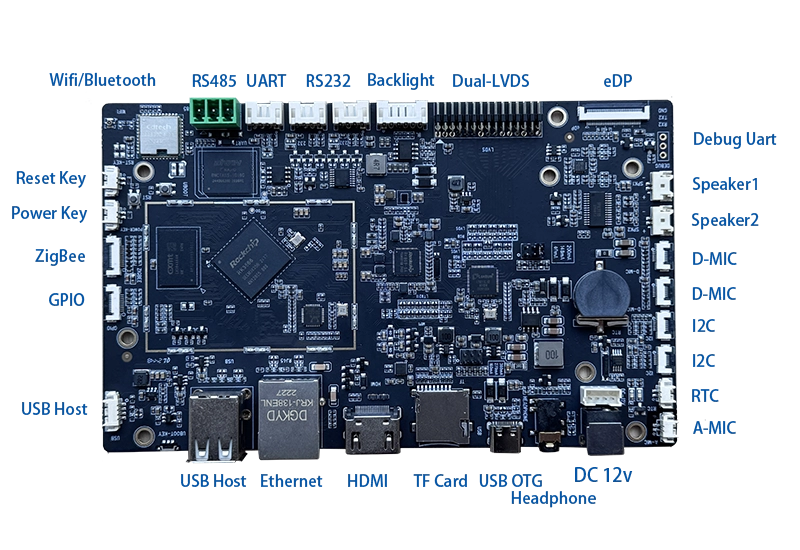
6. Real-World Applications and Future Outlook
Android-based Single Board Computers (SBCs) are no longer limited to experimental or niche applications. They are being widely adopted across diverse industries where rich user interfaces and smart interactivity are essential. Real-world deployments now span across smart home control panels, medical tablets, digital signage systems, educational devices, and even specialized medical diagnostic equipment.
In the smart home sector, Android SBCs are powering wall-mounted control panels that offer seamless touch interaction, voice assistants, and AI-enhanced automation. In healthcare, Android tablets and panel PCs are used for patient monitoring, telemedicine, and even AI-aided diagnosis, thanks to their compatibility with high-resolution displays and multimedia capabilities.
Moreover, the maturity of Android’s touchscreen support, graphical rendering (OpenGL/ES), and ability to interface with AI accelerators make it ideal for next-gen interactive systems. Whether it’s face recognition in retail kiosks, voice-activated commands in hospitals, or gesture-controlled interfaces in education, Android SBCs provide the foundation for building highly responsive and visually engaging solutions.
Looking ahead, Android SBCs are becoming a mainstream choice, not just an alternative. As hardware performance continues to improve and the Android ecosystem evolves, more embedded developers and product designers are opting for Android to accelerate time-to-market while delivering a consumer-grade user experience in industrial and commercial environments.
Looking to integrate Android SBCs into your next smart display or IoT device? Explore our custom embedded Android solutions designed for industrial, medical, and commercial environments.
7. Choosing the Right Android SBC for Your Project
When selecting an Android single board computer, consider key specifications such as CPU type (e.g. Cortex-A55/A76), GPU capabilities, memory size, and display interface options. For applications requiring smooth multimedia and rich UI, opt for SBCs with Android 11+ and hardware video acceleration.
At Rocktech, we offer custom Android SBC solutions that support capacitive touchscreens, MIPI/RGB interfaces, and pre-integrated Android OS for fast deployment.
8. Conclusion
Whether you’re building smart home automation interfaces, industrial control dashboards, or touchscreen kiosks, choosing the right platform is critical. Android SBCs offer a scalable, cost-effective, and developer-friendly alternative to traditional Linux SBCs. As more industries shift toward interactive, multimedia-rich devices, the Android single board computer is quickly becoming the embedded system of choice.
📘 Learn more about our Android SBC solutions designed for smart home, HMI, and commercial terminals.

